If you think all spelling games are rigid and boring, think again! At HOMER, we’re all about building confident learners ready for school and life, and we believe this can be done in fun and exciting ways!
From sneaky switching letters to jumping across letter lily pads, we’ve selected our favorite spelling games to share with you to make your child’s spelling journey an enjoyable one.
In this article, we’ll break down the importance of spelling in early learning, including the stages of spelling development.
We’ll also tell you about nine fun, simple spelling games that you can play at home with minimal equipment required. Let’s get started!
Why Is Spelling Important In Early Learning?

Spelling development is a critical skill in early learning for many reasons.
Spelling is a lifelong skill that your child will use every day, no matter the career they choose later in life, so it’s important that we build strong, confident spellers from early childhood.
As children learn to spell and write with higher accuracy, it makes their writing easier to read — not only for the adults and peers in their lives but also for themselves. This increases confidence in children as spellers and writers.
Additionally, strengthening your child’s spelling abilities assists in both reading and writing skill development.
Phonetically reading and spelling are connected in that reading involves blending sounds into words and spelling involves separating sounds to write a word.
Taking advantage of this skill reversibility is a plus for early readers and will help your child simultaneously build skills in reading and spelling.
The Stages Of Spelling Development
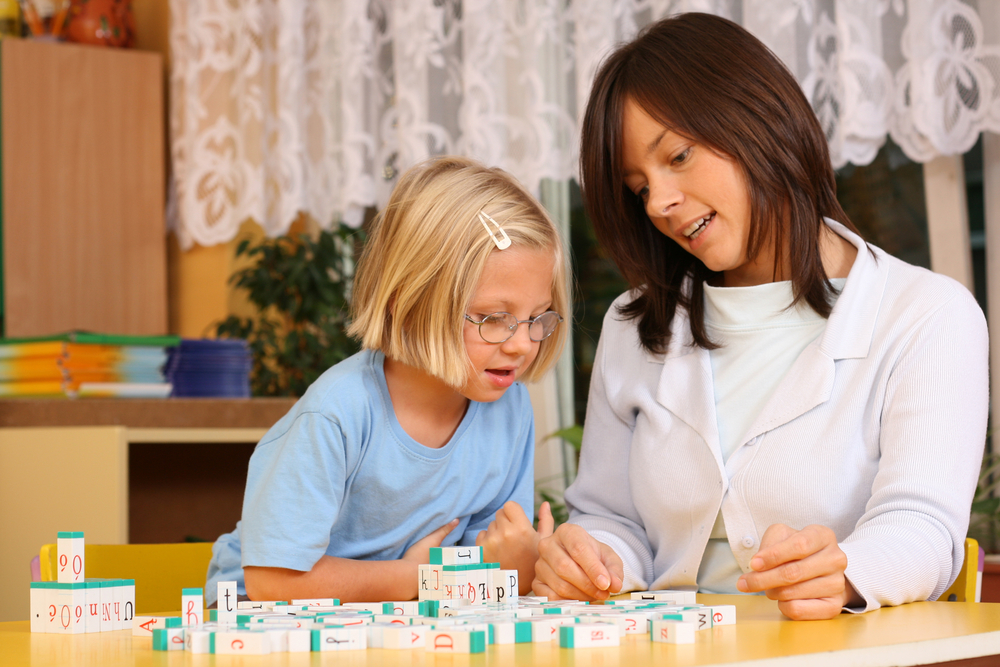
The five stages of spelling development are the precommunicative stage, the semiphonetic stage, the phonetic stage, the transitional stage, and the correct stage.
Here’s a closer look at each of these stages.
Precommunicative Stage
The precommunicative stage is the first phase of spelling development. If your child falls into this group, they don’t yet understand letter-sound correspondence, which is the relationship between written and spoken language.
Children in the precommunicative stage also haven’t yet grasped the difference between upper and lowercase letters, and they may not know the entire alphabet. But that doesn’t mean they’re not trying to learn those letters.
At this stage, children are usually scribbling. Sometimes those scribbles look very similar to our alphabet. Other times, not so much.
All this scribbling and letter learning helps prepare them for the next exciting stage!
Semiphonetic Stage
The big milestone of this stage is that a child begins to understand letter-sound correspondence.
Children arrive at this milestone by learning how to connect written letters to the sounds they make. For instance, for the letter “p,” they may say “puh” to indicate the sound it makes in words.
Another interesting element of this phase is that children may ignore vowels when spelling words. Instead of writing “because,” they may spell it as “bkz.” The child hears the /b/ and the /k/ but attributes the /k/ to K, not C, and the buzz sound for S, which is almost a Z sound.
While it can be tempting to try to correct your child, that shouldn’t be the focus at this stage. Instead, celebrate their progress because this phase won’t last long.
Phonetic Stage
You will notice further development of letter-sound correspondence at this stage. Your child will also show an improved understanding of consonant-vowel-consonant (CVC) words, such as pan, bit, dog, cat, etc.
Children at this spelling stage will begin to understand letter chunks. This is when we connect more than one letter to create a specific sound. For example, ch, sh, br, etc.
The phonetic stage is a major milestone in your child’s spelling development. They are on their way to understanding the basic spelling rules of the English language!
Transitional Stage
Children show an improved ability to handle decodable and non-decodable words at this stage.
Decodable words follow the regular spelling rules and patterns of the English language. Therefore, it’s easier to sound them out when spelling. Non-decodable words are different because they don’t follow the regular patterns of our language (done instead of dun, was instead of wus, give instead of giv, etc.).
As your child’s phonetic instincts improve, they’ll get better at spelling decodable words by sounding them out.
When your child doesn’t know a word, they may rely on their ability and understanding of the structure of words. But they may still incorrectly spell some words. For example, they might spell “egul” instead of “eagle.”
Since non-decodable words (i.e., sight words) don’t follow regular patterns, children may eventually learn them through memorization.
Correct Stage
When your child has reached this stage, they understand the basic spelling rules of the English language. This includes dealing with silent vowels and consonants, prefixes and suffixes, and alternative and irregular spellings.
Children can comfortably handle many words at this phase and may even notice their own spelling mistakes.
With these stages in mind, the games we’ve selected below are geared toward children in the semiphonetic, phonetic, and transitional stages.
This means we’ll be focusing on developing your child’s skills in using consonant-vowel-consonant (CVC) words, sight words, phonetic spelling, and letter-sound correspondences.
Keep reading to find out how to play our favorite spelling games!
9 Fun Spelling Games You Can Do At Home
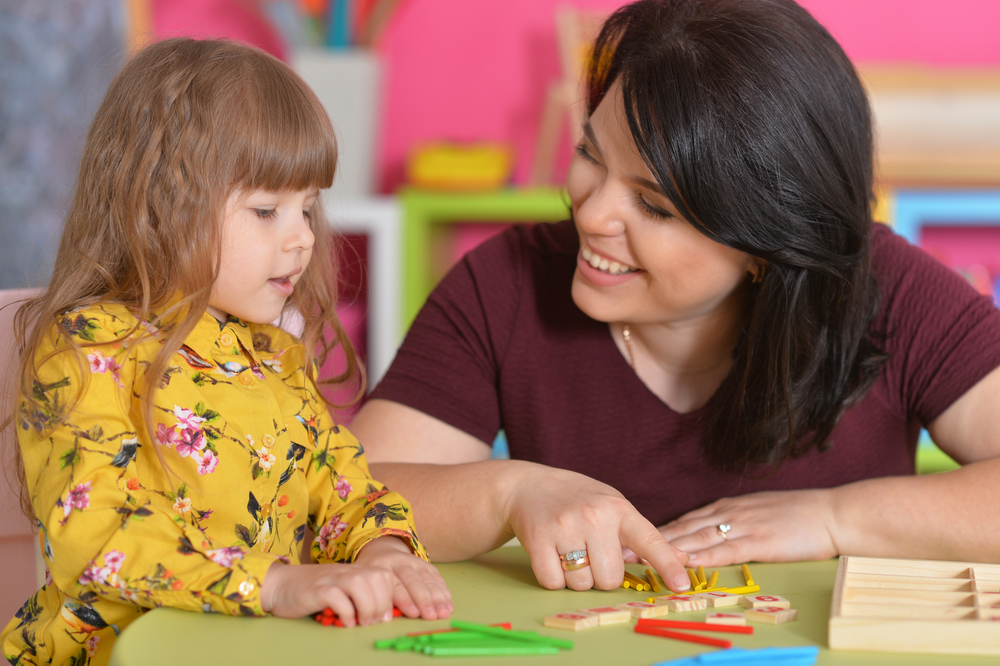
Kindergarten Spelling Games
Throughout kindergarten, your child will begin to learn CVC words that are phonetically regular, such as bed, kid, top, and bug.
When choosing spelling games for your child in this age group, it’s best to stick to activities that include these types of words to build confidence and enhance what they’re learning at school.
Try out our favorites below!
1) Letter Switch
For this exercise, you’ll need letters written on post-it notes, magnetic letters, or some letters cut out from a magazine — whatever is most easily accessible for you.
Starting with a CVC word such as “cat”, have your child change out the first letter to create a new word, such as “pat”. It’s best to start with first-letter changes, as most children will find this the easiest way to learn.
Once your child becomes more familiar and confident with CVC words, you can increase the level of difficulty by having them change the last letters of the word (changing “pat” to “pan”, for example) and then introduce changing vowels, so “pan” becomes “pin”.
Start with a small goal — five correct letter changes equals a win, for example.
Eventually, as your child becomes stronger with their letter changes, you can increase the number of correct changes needed to win the game.
2) Create-A-Word
Start by gathering the post-it notes, magnetic letters, or cut-out letters that you would have used in our first game.
Pick out three letters in no particular order that create a CVC word, and then have your child create a word using the letters you’ve chosen.
If your child is having trouble spelling a word using the letters given, try first putting the vowel in place. This way, your child only needs to fill in the beginning and ending consonants.
Ready to increase the difficulty level of this game? Try picking out six letters and have your child spell out two words!
3) Visualize The Word
As we help our children with their spelling, it’s essential to help them visualize the words so that spelling really comes alive for them. Fortunately, spelling activities can make learning to spell creative and fun!
For this activity, you’ll need a few magazines, a pair of child-safe scissors, a glue stick, craft paper, a marker, and some crayons.
Start by introducing your child to a CVC word, like pan. Then, hand them the magazines and ask them to find the letters p, a, and n (you may want to help them look for larger words in the headlines or titles so that they’re easier to glue).
After finding these letters, have your child cut them out and paste them onto their craft paper. Once they’ve completed this, have them search for images of pans to add to their masterpiece.
Creating this art piece can help children focus on each letter individually, and the visual representations of the word may also help them remember what the term actually means.
First Grade Spelling Games
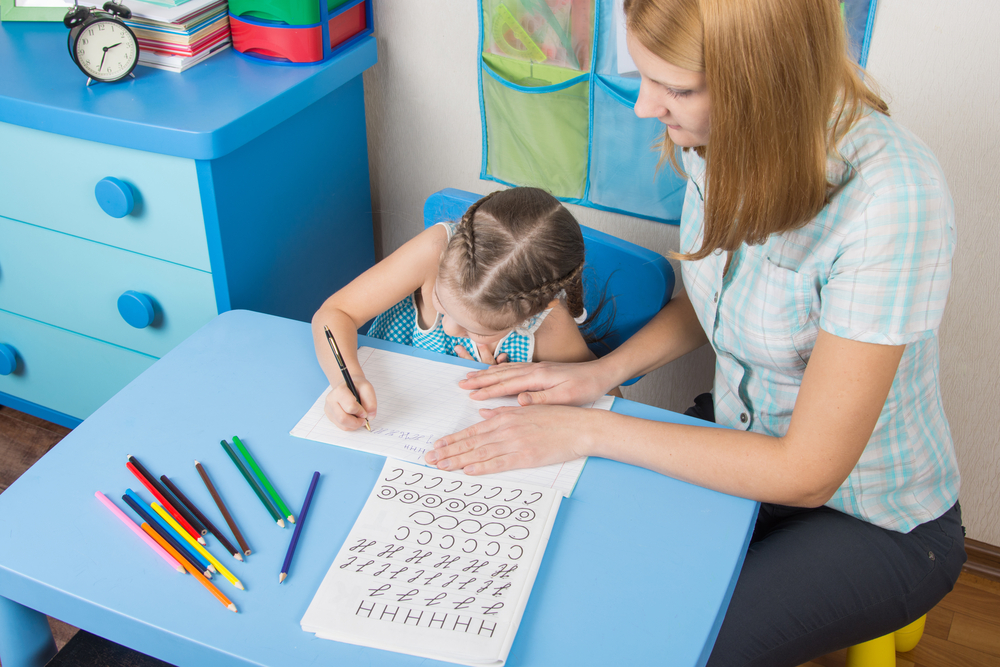
As your first grader is learning to solidify CVC words and phonetically spell words with beginning and ending consonant blends, it’s important to find spelling games that help reinforce these lessons.
We’ve chosen our favorite games to help your first grader reinforce phonetically regular words and memorize crucial sight words that aren’t phonetically regular. Take a look below!
4) Letter Removal
Using magnetic letters or a chalkboard, select and spell out three words that your child is learning to spell.
Have your child close their eyes and take away one letter from each word. Scramble up the removed letters and once your child opens their eyes, have them remake each word.
Once they’re an expert, try taking away two letters from each word, then three, and so on. You could also add in time limits once your child is ready so they can try to beat their personal best!
5) Poster Words
Using the Dolch Word List or your child’s writing, select a word that your child is often misspelling or would like to learn to spell.
For more advanced spellers, try selecting a few words at a time to watch their progress bloom!
On a sheet of paper or cardboard (one per word), draw five large checkboxes at the top and write the word in large bubble letters in the middle to create a poster.
Next, spend some time decorating the letters with colorful markers, stickers, glitter — anything you want!
Once per day, have your child spell out their chosen word without looking at the poster. Each time they’re able to spell it correctly, they get to add a giant check mark to one of the five boxes.
After they’ve filled all five boxes, it’s time to create a new poster! You can even hole-punch each poster once it’s completed and store it in a loose-leaf binder, watching it get thicker and thicker as your child masters more words.
6) Unscramble The Word
For this fun game, all you need are fridge magnets or alphabet blocks.
Choose three words, and scramble their letters with the magnets or blocks. Then, have your child unscramble these words by placing the letters in the correct order.
For an increased challenge, ask them to complete this task within a certain time limit. You can even start with simple words and increase the difficulty as their spelling skills improve.
If you have multiple children, this can also be a great competitive game — the first player to unscramble all their words wins!
Second Grade Spelling Games

Your second grader now knows words with less frequent letter-sound correspondences, such as oy, oi, ou, and aw sounds. This means you can select a variety of age-appropriate words in the spelling games you play to help expand their vocabulary.
Three of our favorite spelling games for second graders are below!
7) Build A Spelling Snowman
This game is just like the traditional Hangman game, but more kid-friendly!
Start by choosing a word in your head, and on a whiteboard or piece of paper, draw the correct number of lines for each letter to be filled in as you play. For example, the word “fright” would have six blank spaces to be filled in with each correct guess.
Have your speller guess what letter might be in the word and fill in a blank with a letter on each correct guess. For each incorrect guess, gradually draw a snowman piece by piece until you run out of additions.
This could start with a large circle for the snowman’s body, a smaller circle for his midsection, and an even smaller circle for the head.
It’s up to you how generous you’d like to be as to how many extra parts the snowman has, but remember to draw in his sticks for arms and fingers, buttons, carrot nose, and of course, his smile!
This fun spelling game can also be played in reverse so that with each correct answer, you’re slowly building the snowman.
8) Leap Across The Spelling Lily Pads
Start this game by writing out each letter of the alphabet on separate pieces of paper to act as your lily pads.
Place the lily pads in any order on the floor and choose a word for your child to spell, saying it out loud. Start with shorter words, and then slowly build up to more complex words.
Once your child knows the word to spell, they can hop like a frog from one lily pad to another until the word is correctly spelled out.
You can add time limits or a points system
Start this game by writing out a select number of letters of the alphabet on separate pieces of paper to act as your lily pads.
Place the lily pads in any order on the floor and choose a word for your child to spell, saying it out loud. Start with shorter words, and then slowly build up to more complex words.
Once your child knows the word to spell, they can hop like a frog from one lily pad to another until the word is correctly spelled out.
You can add time limits or a points system if your child is more advanced, and keeping track of their achievements makes this game even more fun!
9) Spell And Toss
All you need to play this game is a ball that you can easily toss around (e.g., beach ball, tennis ball, etc.). If you’re playing inside, a balled-up sock might be better.
Start by having your family stand in a circle. Then, the first player has to call out a word and toss the ball to the next player, who needs to say the first letter of the word.
When that player is done, they will toss the ball to the next person, who needs to say the second letter, and so on. When a player gets a letter wrong, they can toss the ball to the next player, who will try a different letter.
The player to say the last correct letter gets to decide the next word to spell. As your child’s vocabulary and spelling skills improve, you can pick the pace up by requiring each player to name their letter within a certain time limit.
This is also a great way to practice for the spelling tests your child will likely have once they reach second grade.
Effective Strategies To Help Your Child Spell
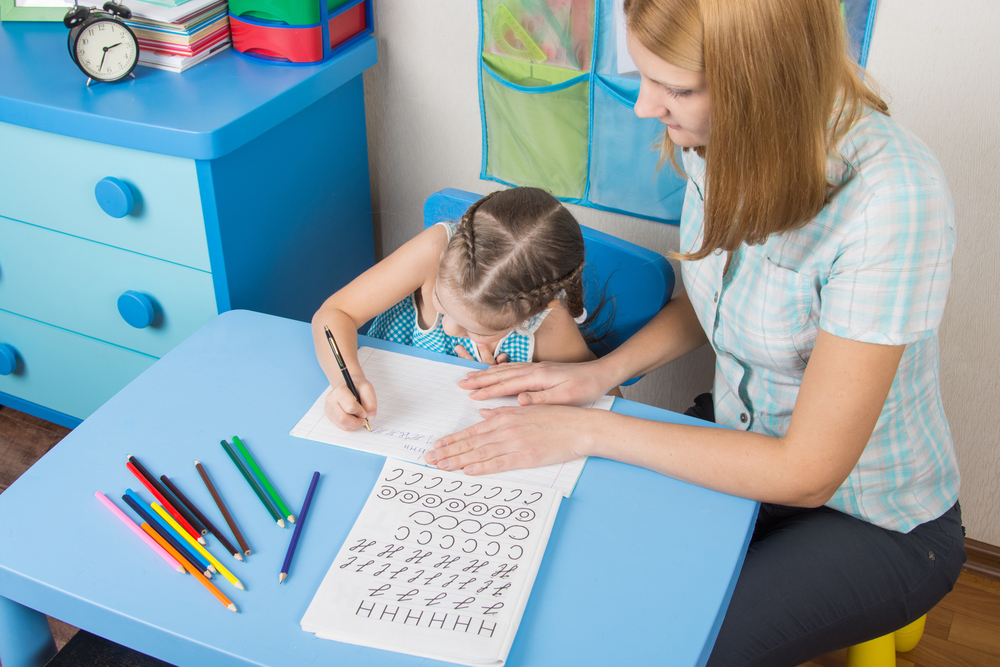
In addition to playing spelling games, here are some tips to help your child improve their spelling.
Focus On Phonemic Awareness
Phonemic awareness is a person’s ability to identify and manipulate sounds, specifically phonemes.
A phoneme is the smallest possible unit of sound in a language. Every word in our language is made up of phonemes, and we blend them to help us form words.
For example, “dog” has the phonemes d/o/g. So, we blend these small sounds (i.e., phonemes) to pronounce the complete word.
Understandably, children who haven’t yet mastered this skill will have some trouble spelling accurately. That’s why helping your child with phonemic awareness is a great place to start.
If your child is struggling with some words, you can read them out loud slowly by focusing on each phoneme and then speed up to say the entire word. For example, c/a/t. Cat!
Practice With Rhyming Words
Rhymes are a critical component of phonological awareness. But they deserve their spot on our list because of how effective they can be in helping children with their spelling.
That’s because a child who knows how to spell the word ball will find it easy also to spell all, call, fall, hall, etc.
You can check out this blog for effective rhyming strategies you can use at home.
Allow For Phonetic Spelling
This tip is important, particularly for younger spellers. Allow your child to spell a word out according to what it sounds like to them.
You can achieve this by first encouraging them to say each letter as they spell. For example, /c/ /a/ /t/ for cat or /p/ /i/ /n/ for pin (later advancing to /s/ /p/ /i/ /n/ for spin).
Once they’ve spelled it out, review it together while focusing on each letter. You can then talk about which letters need to be changed for the word to be correct.
Practice The Chunks In Words
As highlighted above, when we talk about chunks, we’re referring to the grouping of more than one letter together to produce a specific sound. The English language has many, such as ple, br, ch, sh, all, as well as word families such as ish, ang, ack, etc.
Allow your child to practice writing words that have the same chunks (e.g., child, chair, chain, champ, etc.) so they can familiarize themselves with the word families — groups of words with a typical pattern or feature.
The next time your child encounters a word that begins with a “ch” sound, they’ll be better equipped to spell it correctly.
Make Regular Reading A Priority
This is one of our favorite tips!
Reading has many incredible benefits for children, such as cognitive and language development, improving listening skills, and developing a child’s imagination. So, make this a priority by having a variety of books that you can read together.
While reading, remember to emphasize words with specific patterns or rules. For example, if you come across the word ring, remind your young learner of the other words with an “ing” sound, like wing, sing, king, etc.
By doing this, you help your child recognize similar pronunciations and spellings more easily when they see them in the future.
Make Spelling Fun And Simple With HOMER!
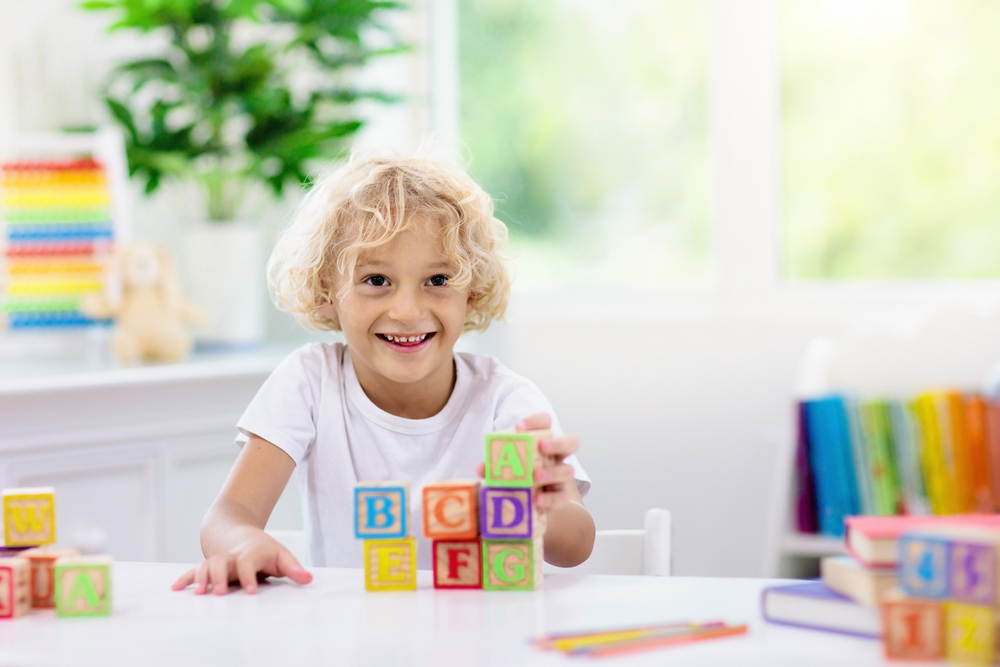
With the spelling games above and some practice, your child can improve their spelling skills while having fun in the process!
One way to make spelling fun is to use our Explore Letters Kit. It is a perfect addition to your exploration of spelling, from CVC words for kindergarteners to more advanced spelling words to develop your second grader’s skills.
Packed with fun activities and expert tips and instructions, our Explore Letters Kit will take your child on a spelling journey like no other!
,


